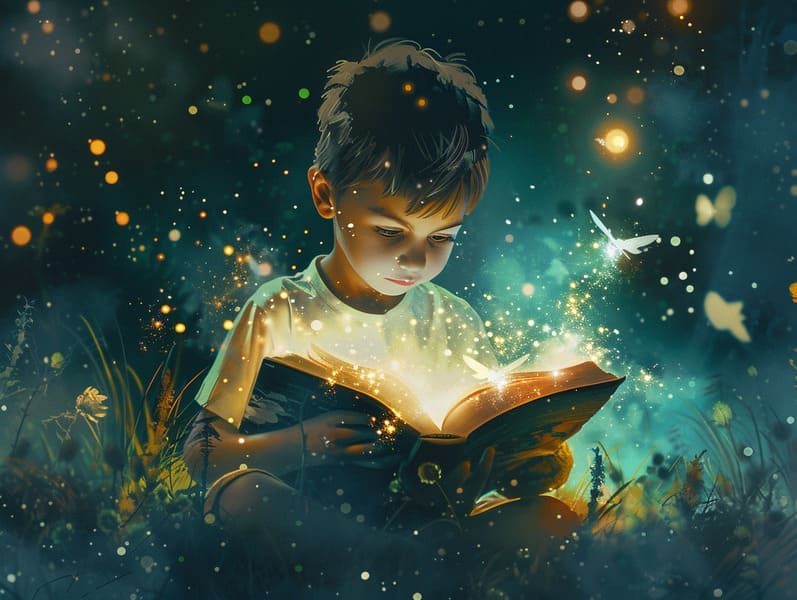
Traditional fairy tales have enduring presence. These narratives have been shared from one generation to the next ages before they were ever published. They came from a variety of cultures, including Eastern traditions. They were initially transmitted among adults, often carrying themes and messages pertaining to the societal norms and beliefs of the time.
The Brothers Grimm, Jacob and Wilhelm, were among the first to assemble many of these beloved stories. Their collection, "Grimm's Children's Stories," included classics like "Cinder Maid," "The Story of Hansel and Gretel," and "The True Story of Snow White," which have since become classics in the world of iconic fairy tales. Similarly, Hans Christian Andersen's charming fairy tales, such as "The Sea Maid," and "The Duckling's Story," have stolen hearts worldwide, guaranteeing their place in the pantheon of iconic fairy tales.
Though they are centuries old, classic fairy tales remain as applicable as ever, especially as nighttime stories for kids. These whimsical stories are now available in various formats, including beautifully illustrated books, enchanting animations, and digital storybooks.
Their persistent charm can be connected to several fascinating points:
Key Lessons: Old fairy tales often share important moral lessons. Stories like "The Story of the Boy Who Cried Wolf" teach the value of honesty, while "The Story of the Tortoise and the Hare" illustrate the traits of tenacity and humility. These stories offer young ones clear distinctions between truth and falsehood, molding their moral compass in a gentle yet lasting way.
Kindness and Comprehension: Old fairy tales frequently portray heroines facing challenges and problems, stimulating audiences to sympathize with their struggles and cheer for their triumphs. For instance, "The Story of Beauty and the Beast" illustrates the necessity of seeing beyond the surface to understand the true nature of a soul, nurturing understanding and comprehension.
Cultural Insights: Many ancient fairy tales are rooted in the cultural contexts from which they grew. Discovering these narratives can provide captivating looks into different heritages, advancing a sense of world awareness and discernment.
Imagination and Creativity: The mythical elements in traditional fairy tales—mythical creatures—provoke children’s creativity. These stories move readers to extraordinary realms, kindling fantasy-filled thoughts and a sense of astonishment that endures a lifetime.
Timeless fairy tales are not only alluring but also teaching. They serve as fascinating tools in nurturing various thinking and feeling skills in young readers. When fairy tales are recited, they nurture verbal development by offering new vocabulary and sophisticated sentence structures. This practice also boosts auditory skills and attention span, as the young pay close attention, enthusiastic to see what happens next.
Furthermore, analyzing the themes and characters of traditional fairy tales can sharpen cognitive skills and critical thinking. Little ones are led to discern patterns, foresee events, and catch on to cause and effect. These debates also facilitate young ones convey their thoughts and feelings, advancing their emotional intelligence.
In today’s modern era, the existence of free fairy tales online has made these stories more obtainable than ever. Digital sites and programs provide large libraries of old fairy tales that can be experienced or listened through anytime, anywhere. Fairy tales narrated are particularly favored, giving an enjoyable way for little ones to savor these whimsical stories. Audiobooks and read-aloud this site videos move characters and settings to life, often enhanced by magical music and songs that intensify the storytelling experience.
The unending appeal of classic fairy tales lies in their ability to adjust to today's society while staying true to their core messages. Contemporary reimaginings of these tales often bring in more representative figures and modern settings, making them meaningful to today’s audience. However, the main ideas of boldness, kindness, and fair-mindedness remain unchanged, continuing to resonate with young readers of all ages.
Classic fairy tales also offer a sense of contentment and knowability. They render a well-ordered narrative with a obvious beginning, middle, and end, often wrapping up with the culmination of conflicts and the triumph of justice over injustice. This assuredness can be comforting for kids, proffering a sense of unwaveringness in an always shifting world.
Classic fairy tales continue to bewitch and guide new generations, maintaining their magic and importance in modern society. As children's bedtime stories, they disclose a perfect blend of fantasy and learning, developing moral values, empathy, and creativity. The existence of web-based fairy tales and the favor of fairy tales read aloud assure that these timeless tales remain accessible to new generations.
By maintaining and divulging these fairy tales, we continue to commemorate the rich tapestry of narrative artistry and cultural heritage. Whether you are perusing a artistically illustrated book, discovering a electronic collection, or listening on an audiobook, the appeal of bedtime fairy tales is always within reach. These narratives convey of the unceasing ability of stories and its ability to bond us across centuries and lands.
Even if you are delving into a vibrantly illustrated book, perusing a web-based library, or listening through an narrated book, the charm of classic fairy tales is always within reach.
These stories point out of the undying magic of narratives and its ability to draw us together across eras and regions, casting a charm that enchants and educates alike.